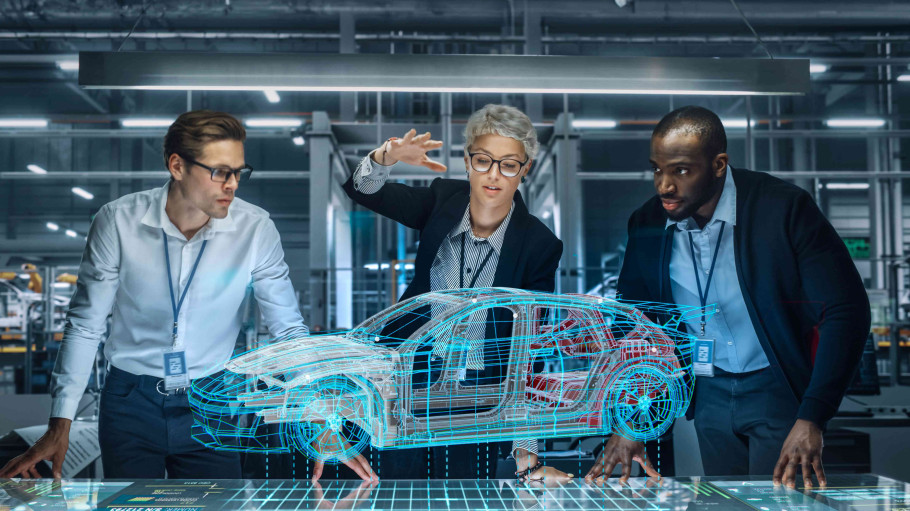
Press releases » Steel and cars: twin pillars of Europe’s economy call for a pragmatic path to transformation
Steel and cars: twin pillars of Europe’s economy call for a pragmatic path to transformation
Downloads and links
Recent updates

Brussels, 22 October - Ahead of the European Council meeting on 23 October, Europe’s steel and automotive industries — two strategic pillars of the EU economy — are issuing a joint call for a realistic and pragmatic pathway to transformation and keeping investments in Europe. Together, these sectors form the backbone of Europe’s industrial strength, supporting over 13 million jobs in automotive and 2.5 million in steel (directly and indirectly), and driving innovation across entire value chains.
The two sectors are deeply interconnected: a strong European automotive industry relies on a competitive and innovative steel sector — and vice versa. Automotive is the second-largest user of steel, while a significant share of the steel industry’s R&D focuses on automotive applications. Yet, the European steel industry is now suffering from alarmingly low capacity utilisation, driven by global overcapacity, high energy and carbon costs, and subdued domestic demand. The situation is compounded by the slower recovery of EU car markets since COVID-19 and an ageing vehicle fleet that weighs on new demand.
After multiple rounds of Strategic Dialogues with the European Commission to chart a way forward, both sectors stress that the time has come to turn ambition into action.
“A strong domestic steel production is vital for the supply chain resilience of the EU automotive industry by providing a reliable, local source, reducing dependence on potentially volatile international markets and ensuring supply security for automotive.” said Henrik Adam, President of EUROFER
“You cannot build a competitive European car without competitive European steel,” said Ola Källenius, President of ACEA. “Smart regulation can create a win–win for both sectors — for example, by recognising and rewarding carmakers that voluntarily source low-carbon steel and materials as part of their CO₂ compliance. That’s how we turn climate ambition into industrial strength.”
The two sectors urge EU leaders to seize the moment at the European Council to set the right framework for a fair and feasible industrial transformation — one that safeguards jobs, ensures competitiveness, and delivers on Europe’s climate and resilience goals, as set out in the European Action Plans on Automotive and Steel.
Contact
ACEA: Camille Lamarque, Policy Communications Officer, +32 2 738 73 17 (cl@acea.auto)
EUROFER: Lucia Sali, Spokesperson and Head of Communications, +32 2 738 79 35, (l.sali@eurofer.eu)
About the European Automobile Manufacturers’ Association (ACEA)
ACEA represents the 16 major Europe-based car, van, truck and bus makers: BMW Group, DAF Trucks, Daimler Truck, Ferrari, Ford of Europe, Honda Motor Europe, Hyundai Motor Europe, Iveco Group, JLR, Mercedes-Benz, Nissan, Renault Group, Stellantis, Toyota Motor Europe, Volkswagen Group, and Volvo Group.
About the European Steel Association (EUROFER)
EUROFER AISBL is located in Brussels and was founded in 1976. It represents the entirety of steel production in the European Union. EUROFER members are steel companies and national steel federations throughout the EU. The major steel companies and national steel federation of Turkey, Ukraine and the United Kingdom are associate members.
The European Steel Association is recorded in the EU transparency register: 93038071152-83.
About the European steel industry
The European steel industry is a world leader in innovation and environmental sustainability. It has a turnover of around €215 billion and directly employs around 298,000 highly-skilled people, producing on average 146 million tonnes of steel per year. More than 500 steel production sites across 22 EU Member States provide direct and indirect employment to millions more European citizens. Closely integrated with Europe’s manufacturing and construction industries, steel is the backbone for development, growth and employment in Europe.
Steel is the most versatile industrial material in the world. The thousands of different grades and types of steel developed by the industry make the modern world possible. Steel is 100% recyclable and therefore is a fundamental part of the circular economy. As a basic engineering material, steel is also an essential factor in the development and deployment of innovative, CO2-mitigating technologies, improving resource efficiency and fostering sustainable development in Europe.

Download files or visit links related to this content
Brussels, 02 December 2025 – Unchanged negative conditions – U.S. tariffs and trade disruptions, economic and geopolitical tensions, protracted weak demand and still high energy prices – continue to weigh on the European steel market. EUROFER’s latest Economic and Steel Market Outlook confirms for 2025 another recession in both apparent steel consumption (-0.2%, unchanged) and steel-using sectors (-0.5%, revised from -0.7%). A potential recovery is expected only in 2026 for the Steel Weighted Industrial Production index (SWIP) (+1.8%, stable) and for apparent steel consumption (+3%, slightly revised from +3.1%) – although consumption volumes would still remain well below pre-pandemic levels. Steel imports retained historically high shares (27%), while exports plummeted (-9%) in the first eight months of 2025.
Fourth quarter 2025 report. Data up to, and including, second quarter 2025
Brussels, 27 November 2025 - The European ceramic, aluminium, ferro-alloys and steel industries express their deep concern about the potential impact of the EU-India FTA on strategic European industries if a sector-specific approach is not adopted and our sectors’ challenges are not duly considered.